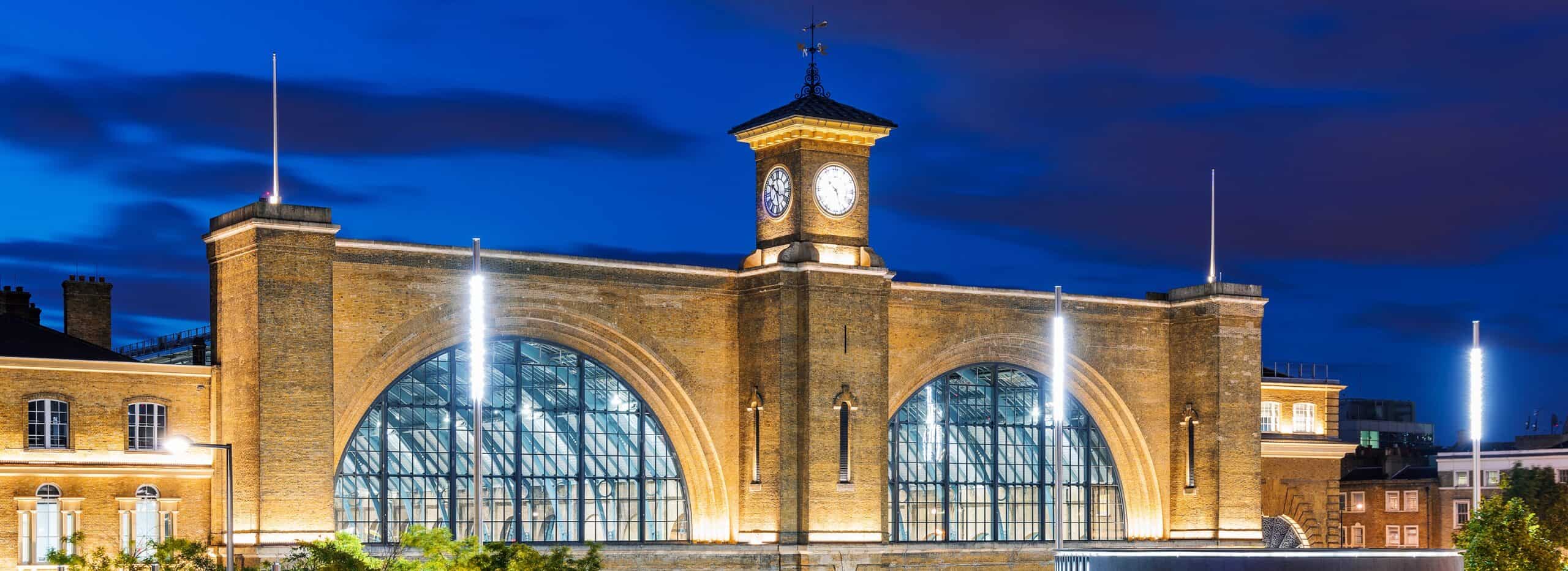King’s Cross Redevelopment | UK
Project summary
Images of the project
Welcome to Kings Cross
King’s Cross railway station is a major London railway terminus, opened in 1852. Immediately to the west across Pancras Road is St Pancras International, the London terminus of the midland main line, Eurostar and high-speed trains to Kent via High Speed 1 and a major interchange for Thameslink services between Bedford and Brighton.
The two stations are operationally completely separate, but as they are adjacent, they are regarded as a single complex for interchange purposes. They share King’s Cross St. Pancras tube station on the London Underground network, where six Underground lines meet. Taken together, the two main-line stations and the associated underground station form one of Britain’s biggest transport hubs.
In 2005, a £500 million restoration plan was announced by Network Rail.
The plan included a thorough restoration of the arched roof of the original station and the removal of the congested 1972 extension, to be replaced by an open-air plaza. This project undertook a major redevelopment of King’s Cross and St Pancras stations, including the upgrading and expansion of the existing underground ticket hall and the constructing two new ticket halls. The ticket halls allow the interconnection between the new Eurostar terminal, King’s Cross station and the underground stations of Victoria, Piccadilly and Northern Lines.
The project included the construction of a brand new underground station for the Thameslink 2000 rail services in close proximity of the Barlow Shed of Saint Pancras and a complex construction of 9 piles within 2 m of Northern Line and the Piccadilly loop.
Over a period of 5 years, Sixense had contracts with the owner (London Underground Ltd.) and the contractors for the monitoring of surface and underground structures during the construction of the complex junction, allowing for a wide variety of potential destinations albeit on conventional railways.
